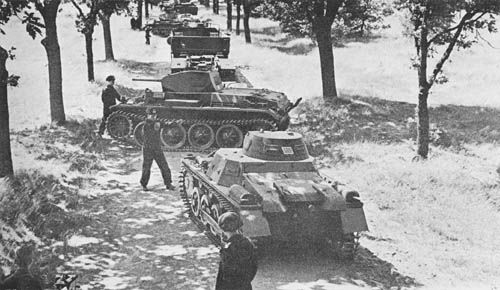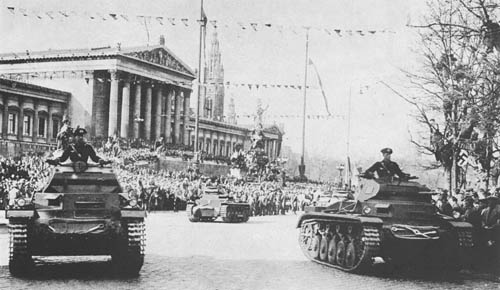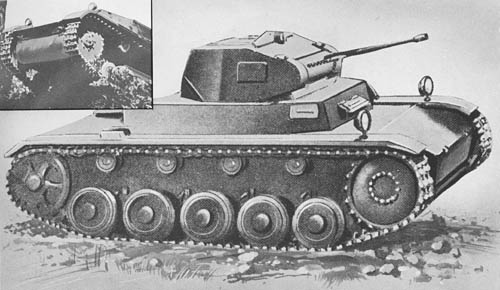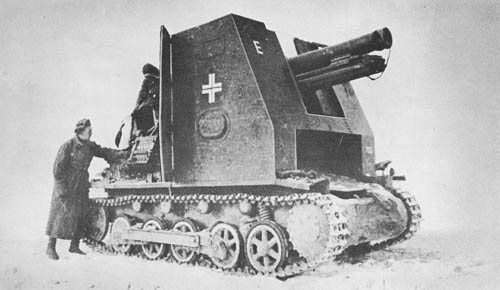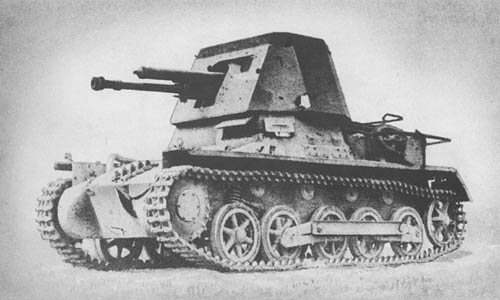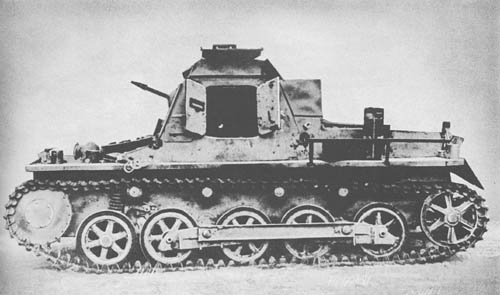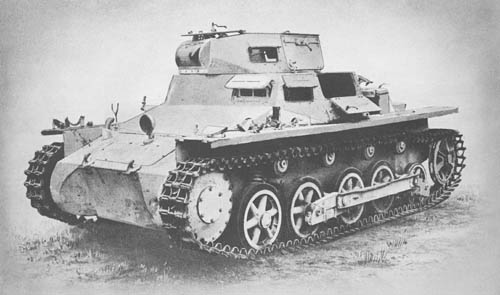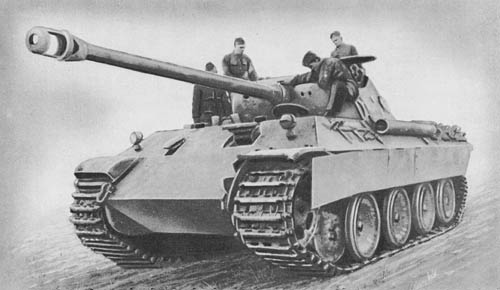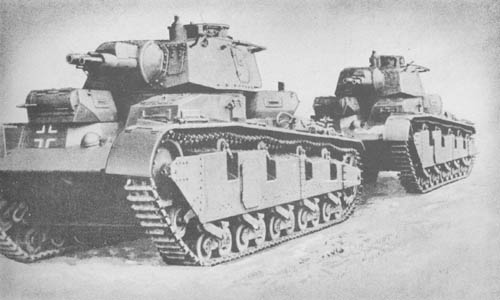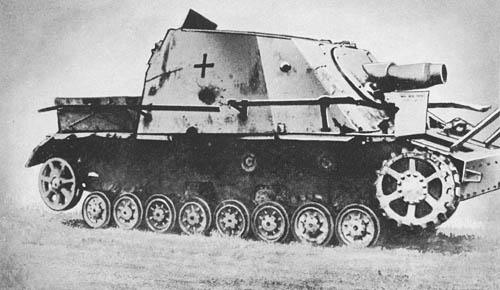
The 15 cm heavy infantry gun, in addition to being mounted on the Pz. Kpfw. I, II, and 38 (t) chassis, is also mounted on the Pz. Kpfw. IV chassis. In this combination it is known as the “Grizzly Bear.” While this vehicle is several tons heavier than the Pz. Kpfw. IV tank, the road performance of the two is similar. It is manned by a crew of five.
With the exception of the front, which incorporates the ball mounting for the gun, the sloping, four-sided gun shield is similar in construction to that of the “Bumble Bee,” although it is set farther forward on the hull. It is also similar to the shield on the “Wasp.”
It is probable that some rearrangement of the mechanical components of the chassis have been made in the “Grizzly Bear” as in the “Bumble Bee.” It is known that the armor on the hull front of the original tank has been increased from 50 mm to 100 mm and that on the sides from 30 mm to 40-50 mm. An additional circular strip of armor plate is bolted to the front of the shield around the ball mount of the gun.
The gun, which is a standard German infantry weapon, has a total length of 64.57 cm, approximately half of which extends beyond the ball mounting. No details of the performance of the gun in the above arrangement have been reported. However, comparative details may be found in the descriptive analysis of the equipment known as “15 cm s.I.G. 33 (Sfl.) auf Pz. Kpfw. II” in this catalogue. No auxiliary armament appears to be mounted on the “Grizzly Bear.”
SPECIFICATIONS
| Weight | 28.6 tons | |
| Length | 19 ft., 4 ins. | |
| Width | 9 ft., 7 ins. | |
| Height (est.) | 9 ft., 4 ins. | |
| Ground clearance | 15 ins. | |
| Tread centers | 7 ft., 11 ins. | |
| Ground contact | 11 ft., 6 ins. | |
| Width of track | 15 ins. | |
| Pitch of track | 4 3/4 ins. | |
| Track links | 98 | |
| Fording depth | 3 ft. | |
| Theoretical radius of action: | ||
| Roads | 95 miles | |
| Cross-country | 60 miles | |
| Speed: | ||
| Road | 25 m.p.h. | |
| Cross-country | 12 m.p.h. | |
| Armor | ||
| Front plate | 100 mm | |
| Sides | 40-50 mm | |
| Shield | (est.) 10 mm | |
| Armament | Stu. H. 43 (15 cm s.I.G. 33) | |
| Ammunition | 24 rds. | |
| Engine | Maybach HL 120 TRM, 320 hp. | |
| Transmission | Synchromesh—6 speeds forward, 1 reverse. | |
| Steering | Epicyclic, clutch brake | |
| Crew | 5 |
German: p. 33
